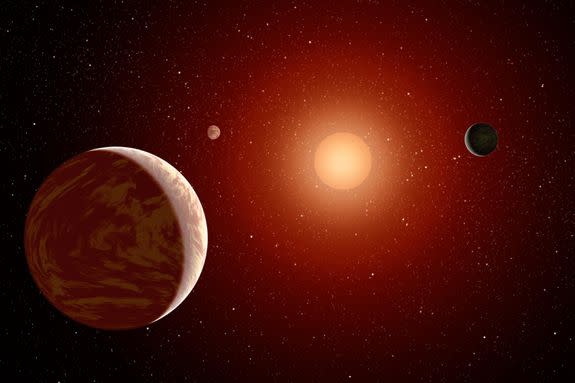Scientists want you to help them find planets in this database of stars

Scientists need your help to hunt for alien planets circling distant stars in the universe.
Data about 1,600 relatively nearby stars collected over the course of 20 years by a telescope in Hawaii was just made publicly available. So now, researchers are hoping that members of the public will use their free time to comb through and find hints of planets circling those alien suns.
SEE ALSO: NASA to explore a metal asteroid that could be the core of a doomed planet
“This is an amazing catalog, and we realized there just aren’t enough of us on the team to be doing as much science as could come out of this dataset,” Jennifer Burt, an MIT scientist working with the data, said in a statement.
“We’re trying to shift toward a more community-oriented idea of how we should do science, so that others can access the data and see something interesting.”
The dataset includes 61,000 measurements of the different characteristics of the light from the stars, which are all within 325 light-years of Earth, according to MIT.
By checking out these measurements, scientists can actually learn more about how a star wobbles in its orbit. Those wobbles can be caused by internal characteristics of the star, but if the star wobbles in a specific, regular way, it might be caused by a planet — or planets — exerting their own small gravitational influence on their host star.
The dataset will allow members of the public to look at this radial velocity information and help scientists figure out if there are any planets hiding in the noise.
So far, scientists looking at the set have already found about 100 possible alien planets (also called exoplanets), and they expect to find more.
“There seems to be no shortage of exoplanets,” Burt said. “There are a ton of them out there, and there is ton of science to be done.”
According to some estimates, nearly all stars are expected to have at least one planet in their orbits, and there are a variety of ways to detect them. In total, scientists have found more than 3,000 confirmed planets circling alien stars.

Image: NASA/JPL-Caltech
Aside from radial velocity measurements, scientists can also use the "transit method," which hinges upon measuring dips in a star's light as a planet passes between Earth and its host star.
Scientists also want to directly image exoplanets as they orbit stars, but because of the extreme difference in the brightness of a star versus its planet, that presents a major challenge.
In the future, space-based telescopes might be able to blot out the light of distant stars to see the planets orbiting around those stars, and ground-based observatories could also train their mechanical eyes on not-too-distant worlds to see what they might be like.
But for now, if you want to help with the exoplanet hunt just download the data, some open-source software developed by the research team and go through a tutorial that teaches you how to use it.
Happy hunting!
